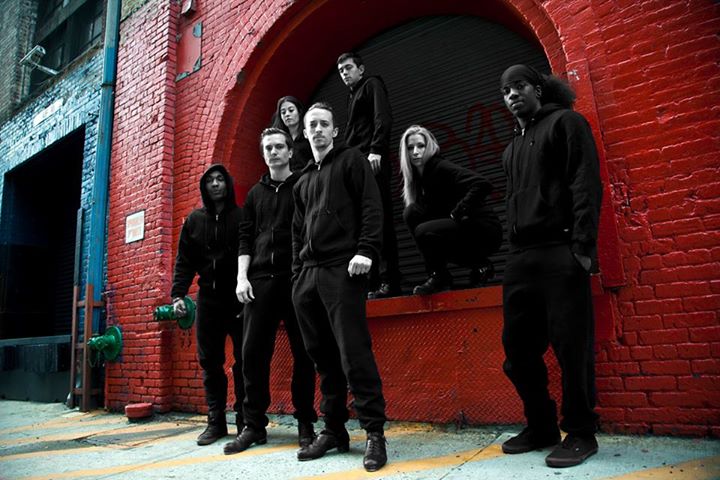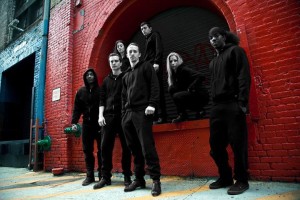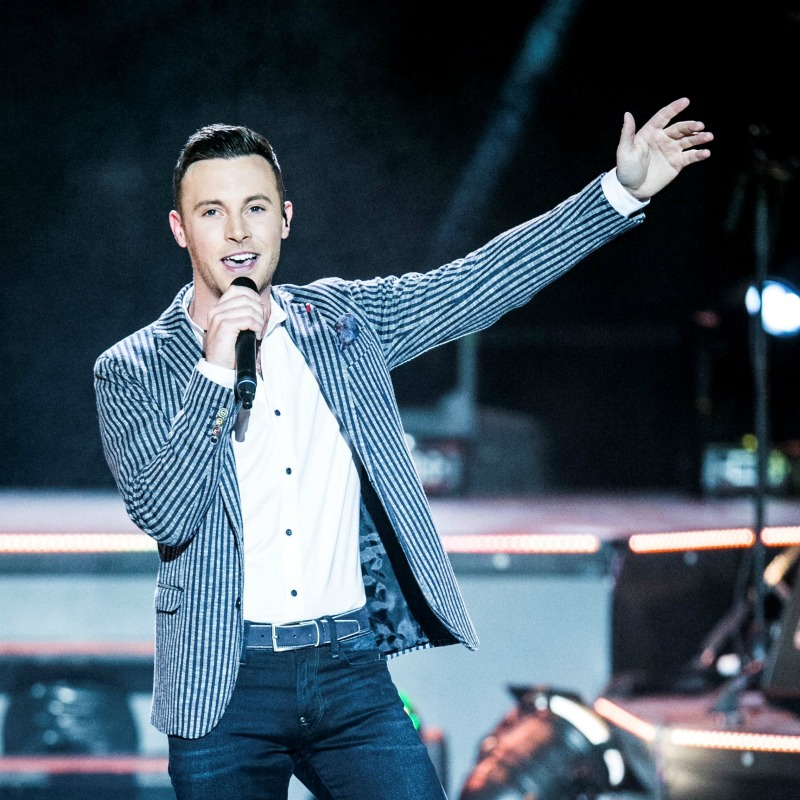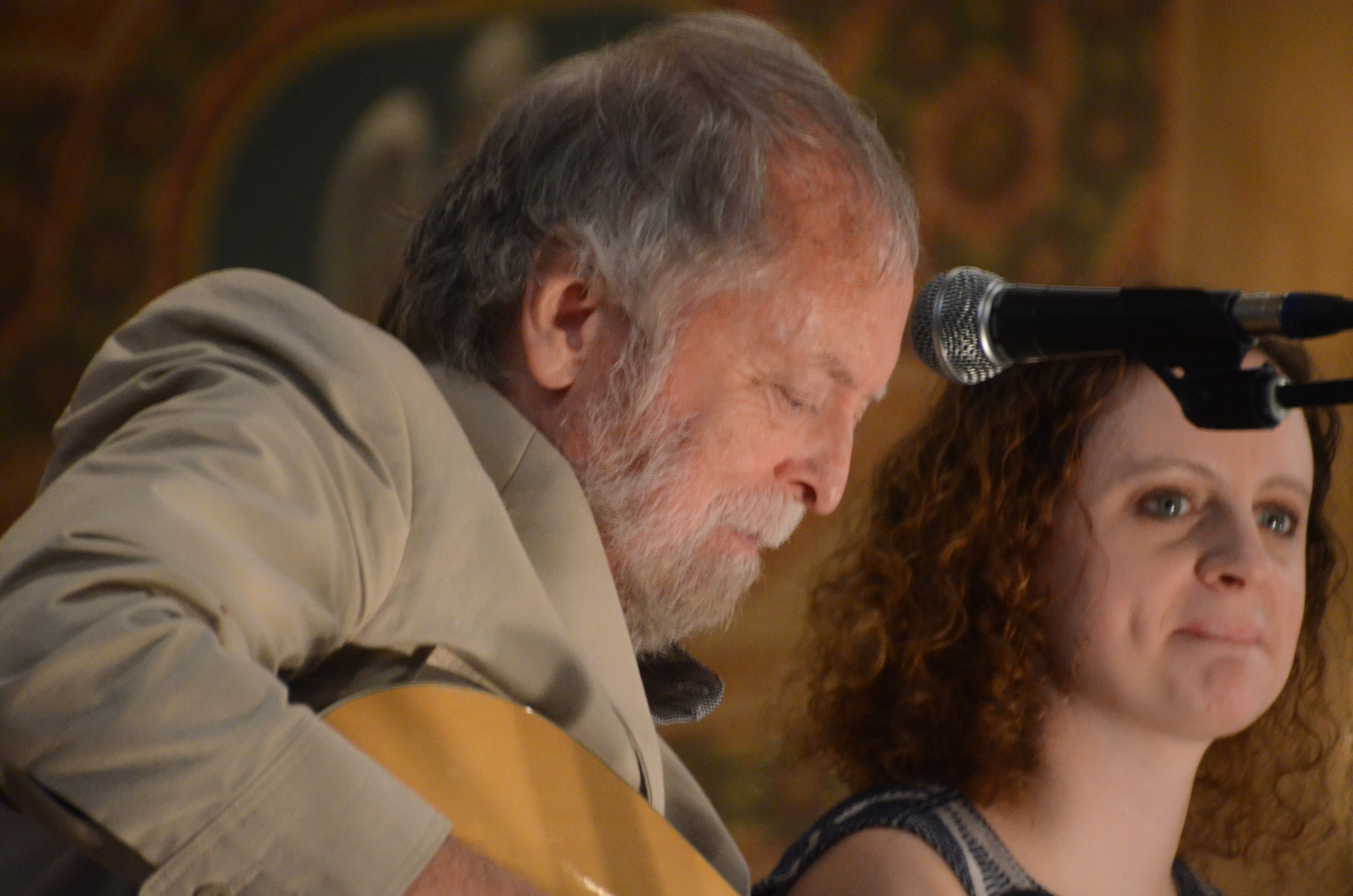It’s not every day that an Irish-Hip Hop dance troupe makes it through the auditions of “America’s Got Talent,” especially with these words of blessing from judge Howard Stern: “Your skill level is so high that you’re are too talented to ignore.” But that’s exactly how it happened on the June 25th episode of the NBC series, when Hammerstep got put through to Las Vegas.
Performing their routine garbed all in black and wearing gas masks, the group danced to “Exodus,” an original composition co-produced by Hammerstep and Pat and Sean Mangan. Riverdance, it’s not— although the two co-founders of Hammerstep, Garrett Coleman and Jason Oremus, are both Riverdance alums.
“We started conceptualizing Hammerstep back in 2009. Jason and I had met touring with Riverdance, and we were actually off tour at that point. We were both working 9 to 5 jobs—not dead-end, but not really fulfilling work. We were pretty miserable, and realized we had similar visions for putting together a large-scale touring production. We found we had a lot of similarities and parallels in how we viewed the world and what we wanted to do with Irish dance,” Garrett Coleman explained.
What both dancers had in mind involved taking Irish dance beyond the mainstream, at the same time incorporating other genres that had been born out of oppressive cultures.
“It kind of started out as an experiment in melding these dance forms; a lot of people wonder why we chose the dance forms we chose to integrate. We’re both trained in traditional Irish dance, so that was our base. But we noticed that the art form had remained pretty stagnant since Riverdance launched; the same choreography, nothing really changed. And that was great in its own right—obviously we wouldn’t be here today if it wasn’t for people like Michael Flatley. But it was due for an infusion of something more socially relevant, something that would resonate with a younger audience.
“We saw the parallels from where the many dance forms come from as being a really strong thematic thread through all of them…Jason and I both come from similar backgrounds and upbringings in urban environments [Garrett is from Pittsburgh, PA, and Jason hails from Sydney, Australia]; we’re both huge fans of hip hop and urban culture. So, we took our social interests and tried to bring that into our dance and artistic and creative interests. We drew from tap and hip hop, and African stepping and body percussion. And the reason for choosing some of those is not just for the fact that they rhythmically work really well together, but also for the fact they’re all born out of previously oppressive social circumstances. Like Irish dancing arose as part of an Irish cultural resurgence in response to oppression by the British. And hip hop obviously was a huge unifier for impoverished communities in the Bronx and the other five boroughs of New York. It was a statement for the youth to come together around culture rather than being divided along gang lines and poverty.
“We have a heck of a lot of people from different backgrounds all coming together behind this project, and that was the basis for the piece with the gas masks—having a sense of anonymity throughout that piece, and then taking the masks off at the end of the piece and revealing people from different racial backgrounds, different genders, different dance styles. And then having that solidarity once we put the masks on, symbolizing a unification of cultures.”
The fusion that has taken root in their dance routines, and their ever expanding choreography, is only the tip of the iceberg for the larger mission of Hammerstep. They want to tell their stories, and the stories of the people they’ve surrounded themselves with, as part of a project with a much more socially significant message.
“The Hammerstep initiative,” Garrett defined, “is kind of like the umbrella organization that we’d like to launch a variety of things through. We have a Hammerstep Headquarters here in Brooklyn; it’s part living, part office, part dance studio—a massive dance studio that actually converts from a living room into a rehearsal space. The crew comes over here for the majority of our dance rehearsals, and we’re just getting into holding some community events here. We’re going to be launching a Hammerstep radio broadcast from here as well. Through the website, we’ll have a podcast/live stream of things that are happening here, like video footage of rehearsals. It’s a very creative space where there’s a lot of collaboration.”
Ultimately, they’d like to have a production company where they’d produce their own shows. The dancers work closely with musicians who like the idea of collaborating to make Hammerstep into a larger social movement, one that would include a Hammerstep foundation from which they’d launch outreach projects and dance workshops internationally.
“We know what dance has done for our own lives and what it can do for other people who don’t necessarily have access to it or who haven’t been introduced to it,” Garrett added.
It’s the continuing cross-cultural partnerships engaged in by the group that breathe new dimensions into their Irish dance base; while presenting workshops in Soweto, South Africa, recently, they learned as much as they taught.
“Whether it’s in Soweto, or Dayton, Ohio, wherever we do these residencies, the kids that we work with teach us a lot of their own cultural understandings of the world. We try to incorporate that into the choreography and into Hammerstep as a whole as we move forward. So, for instance, in Soweto, the African gumboot dance is very similar to what you’d see in the African American tradition of stepping here in the U.S. It was a response to the oppressive circumstances in the mining industry over in Soweto; it was used as a form of communication for people working in the mines. And they taught us this dance. It’s kind of a simple dance form but rhythmically, it grabs a hold of people and it fits very nicely with the Irish style as well. The language barrier was pretty significant, but that universal language of rhythm that everyone always talks about, it’s very true how powerful that is.”
With so much going on, the group is in the middle of seeing the hard work of the past 4 years take them into the next phase of Hammerstep.
“The ‘America’s Got Talent’ thing is the most exciting thing on the horizon. We’ve had to turn down some work to participate in that. And we’re working on a music video style production with some cutting edge choreography and concepts. It’s an exciting time.”
That excitement was on full display on “America’s Got Talent.” Among the dancers who are performing with the group for the television show is Jonathon Srour, who we here at Irish Philadelphia consider a home-town talent (he’s from York County). Jonathon is part of the musical Srour family who perform as Irish Blessing, along with Cushla, Josh and Jim. When Jonathon made the move to Brooklyn, he joined up with the Hammerstep crew, and they started training him in. The other members of the troupe behind the gas masks—in addition to Garrett, Jason and Jonathon—are Scott “Swag” Pilgrim, Ronald “Shadow” Simmons, Nicole Zepcevski and Meghan Lucey. And Garrett’s younger brother Conor Coleman, on summer break from his studies at LaSalle University, is also training to join the troupe.
If you haven’t caught the clip from their appearance on “America’s Got Talent,” you can watch it on YouTube.
And, to keep up with everything Hammerstep, Like them on Facebook. They have a website that is still under construction; you can check it out at this link.




